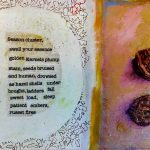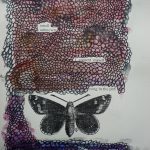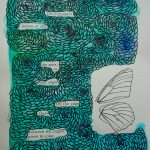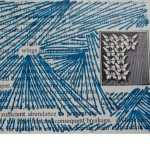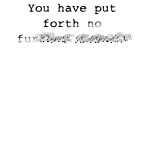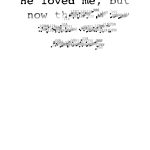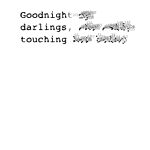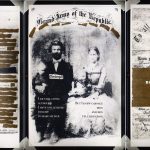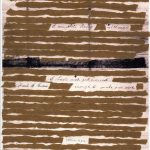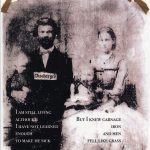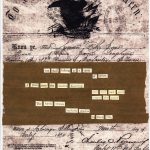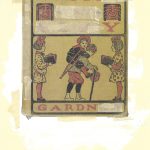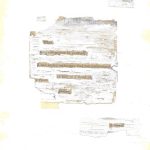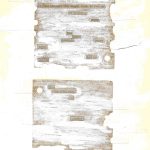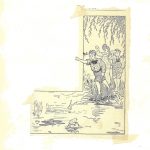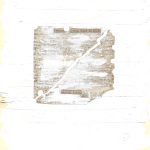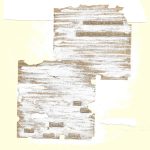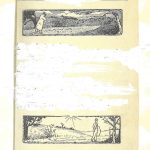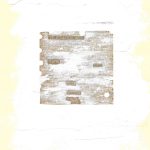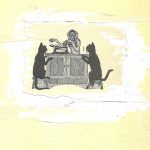View from True North by Sara Henning
Southern Illinois University Press, 2018
Paperback, 76 pages, $15.95

In “Camera Lucida,” the second poem in Sara Henning’s collection View From True North, the speaker says, “Let me be witness, Lord,” and “the discreet // side of revelation still / calls me home.” Those lines delineate both intent and subject matter here, for the book is a long and heartbreaking catalogue of the ways in which human beings can be cruel to one another.
Henning acknowledges that her grandfather—her mother’s father—is the primary character in the book, and here is what we learn about him: he routinely physically and emotionally mistreated his children and wife; he routinely drank to excess, and was a mean drunk when he did so; he was a closeted homosexual, who kept a photographic and diary record of his many trysts, which his family discovered after he died; he infected his wife with an STD, then refused to admit it. Other poems center on the grandfather’s slow death from dementia, Henning’s father’s suicide, and an attempt at same by her mother.
The grandfather appears in virtually every poem in the book, and the poems assume a variety of forms, from couplet poems to prose poems to sonnet-like sequences. Henning skillfully matches form with subject matter throughout the book; the almost-sonnet sequences—extended meditations on the complicated relationship the speaker had with her grandfather and has with his memory— are among the most successful poems here.
But the salient features in View From True North are the highly inflected diction and the sometimes-knotty syntax. In almost every poem we’re reminded—explicitly—of the demons being dealt with. In “How I Learned I Had the Shine,” it’s “my grandfather’s rage / when his martini lunch / cuts through modesty,” and “Vermouth’s nude / currency flits through / his glass now.” In “For My Uncle, Who Learned to Fly,” we’re told of “the nights their father forced them / into the cellar, spurred him / onto his sister with joint locks / and vital point strikes.” In “Song,” it’s “blue notes / The kind a father sings / while forcing his daughter’s body / to the floor.” “Baptize Him in Dark Water” gives us “Sesame chicken // exit-wounding from his mouth unswallowed.”
In “Through a Glass Darkly,” the speaker’s mother, after the grandfather’s death, finds a journal in which he chronicled his many homosexual assignations. For the speaker, the journal is an “artifact”:
What she found—Polaroids glued on back leaves. Naked men posed over
beds, their hard cocks stretched over bellies like sunning garter snakes.
Barely legals standing akimbo, underwear cupping their scrotums. Entries
itemizing names, prices paid in U.S. dollars, dimensions of each organ limp and
aroused. The positions in which he fucked them.
In “Baptize Him in Dark Water,” we encounter “Jags of heat-whelmed ice too sultry // not to thieve through the specular reflection / spiral into a raid of light.” In “Concordance for My Grandfather’s Dementia,” “Fox piss, tail feathers, a geography / of organs lashed into countries—no / heuristic for this whole bruised longitude of animal.” “The End of the Unified Field” gives us “I’m ensnared by his stroboscopic / motion. I trace his dervishes through each illumination / angle-tangent plane. Surface normal. I watch him, / susurration in the sky’s braille of snow.”
It is, of course, through conscious choice and artistic inclination about how to approach subject matter that poems are made. But when such charged diction and syntax are used to present already emotionally loaded subject matter the result is a lot of surface noise. Again, perhaps that is Henning’s intent here; perhaps she feels that a more subdued approach would be insufficient to convey the impact of what is being described.
But the cumulative effect is to risk compromising subtext. Just as it is possible to describe a fish or a sandpiper or autumn in language that not only describes the creature or object but also implies the speaker’s connection to it, so it is possible to describe horrific human behavior and achieve the same result. In many places in Henning’s book I can vividly see the bruises and the emotional harm the characters are experiencing. But I have a more difficult time understanding why I am being told about it, what the speaker of the poem desires me to take from it. Revulsion, pity, shock—those are natural adjuncts to the stories we are being told. But a newspaper account can deliver that. On finishing a third reading of this book, I felt that I would not be picking it up again. I was sated, yet longing for a texture and substance that isn’t quite there.
There is no doubt that Henning is a talented poet, one who is adept with form and is well practiced in the ways of making poems. This reader would hope that in future books she might find subject matter that lends itself to more subtlety, that offers more than cruelty.
